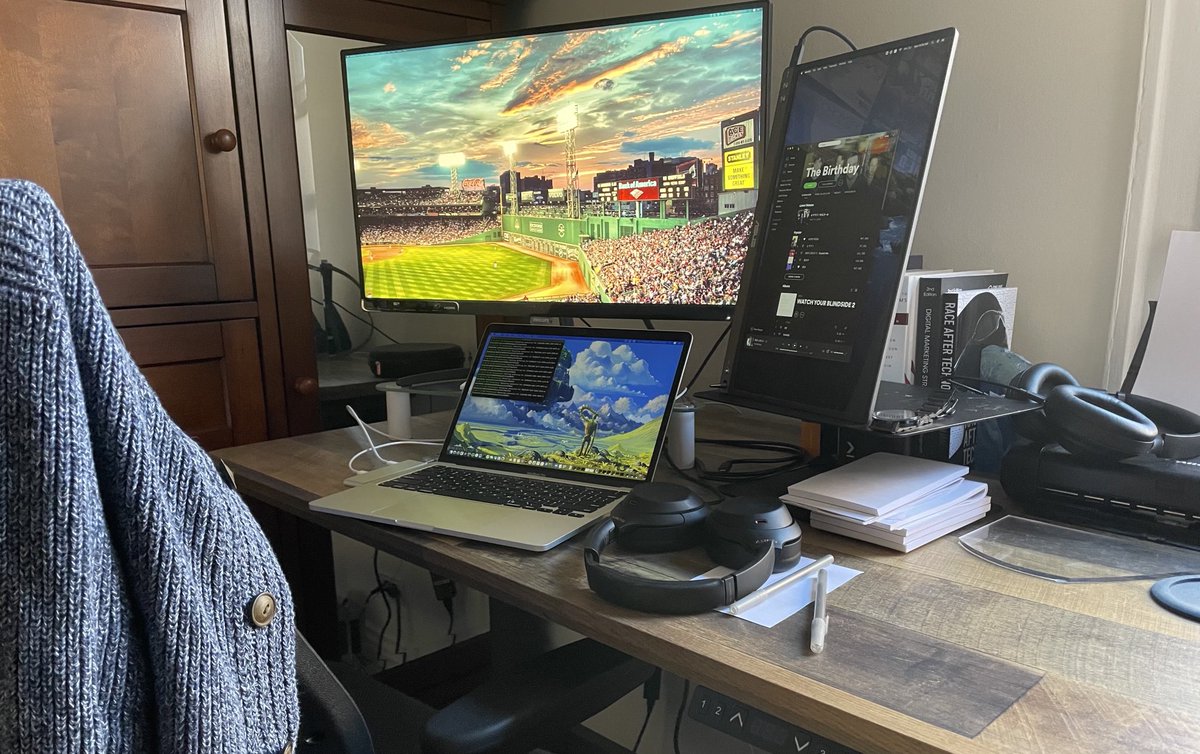
So let me start with the whether or not to part.
It’s a lot of work and a lot of responsibility to be accountable for the company’s entire DS practice, and for people’s jobs and professional growth. It’s not for everyone! There are weeks when I don’t get to code at all.
It’s a lot of work and a lot of responsibility to be accountable for the company’s entire DS practice, and for people’s jobs and professional growth. It’s not for everyone! There are weeks when I don’t get to code at all.
https://twitter.com/vicgrinberg/status/1371101882245115906
You don’t have to be a manager or dept head to grow your career. You can be principal, lead, or senior data scientist, and you can accept some mentoring responsibilities but fight away the managerial and strategic ones.
(Sometimes it isn’t clear you have this choice in small companies. But in my experience, small companies also offer the most flexibility for crafting your role & growth.)
How did I grow into this role?
1. A part of it is what I touched on above. I was at a consulting company where the career promotion chart involved managerial responsibilities.
1. A part of it is what I touched on above. I was at a consulting company where the career promotion chart involved managerial responsibilities.
2. Another part of it is that I tend to spend time & “in-office political capital” to make sure my coworkers are doing okay.
Even before I was manager, if I had the attention of a senior person I’d mention if I thought one team was under-resourced.
Even before I was manager, if I had the attention of a senior person I’d mention if I thought one team was under-resourced.
That was NOT a great career move. But I knew that if I had influence inside a company that I wanted to use it to advocate for others.
I also am grateful to all the mentorship & career advice I had in academia and my career switch to data science. I also know firsthand how bad things get when your peers or seniors are inattentive or don’t care.
So I try to pay the good parts forward.
So I try to pay the good parts forward.
So I guess this second point is: make sure you *want* to manage.
That doesn’t mean just “manage work” but also mentor, advocate, lift up work, lose sleep for your coworkers.
That doesn’t mean just “manage work” but also mentor, advocate, lift up work, lose sleep for your coworkers.
3. As a consultant, I had the opportunity to work with executives at large companies.
I led and co-led projects that involved learning about their problems, and designing and iterating on solutions.
This gave me exp for the strategy and corporate project design part of the job.
I led and co-led projects that involved learning about their problems, and designing and iterating on solutions.
This gave me exp for the strategy and corporate project design part of the job.
4. I also feel that I should be candid about my privilege.
I’m a man with advanced degrees in STEM. My bosses liked to use the prestige of my degrees when introducing me to clients.
I can turn on, or often am unwittingly in, “confident physicist mode.”
I’m a man with advanced degrees in STEM. My bosses liked to use the prestige of my degrees when introducing me to clients.
I can turn on, or often am unwittingly in, “confident physicist mode.”
I think those things amplified the actual execution of my work. It helped direct unique projects my way, and it helped the way people evaluated the outcomes.
These things help in some interview settings.
These things help in some interview settings.
So when I went looking for my next job, I knew I was open to more managerial opportunities because of 2. Then 3 helped me convince people that I could lead strategy and project vision.
Okay, so what advice do I have for people who want to manage?
Let your boss know you want to manage.
Look for small opps first, like supervising an intern or being the onboarding buddy for a new hire.
Self-advocate to get opportunities to lead projects or be the point person.
Let your boss know you want to manage.
Look for small opps first, like supervising an intern or being the onboarding buddy for a new hire.
Self-advocate to get opportunities to lead projects or be the point person.
And more generally, not everything you’re looking for in your career may come at the current job.
If you want to lead a team but your team has 3 people with no sign of growing, you may get some small leadership opportunities but need to look outside for the actual job title.
If you want to lead a team but your team has 3 people with no sign of growing, you may get some small leadership opportunities but need to look outside for the actual job title.
I should also remind you that I’ve been in data science for 4 years!
Yes, I have mentoring and leadership experience from academia—but I’ll be the first to acknowledge that I’m not the most seasoned veteran on this topic!
So grain of salt, only one opinion, etc!
Yes, I have mentoring and leadership experience from academia—but I’ll be the first to acknowledge that I’m not the most seasoned veteran on this topic!
So grain of salt, only one opinion, etc!
• • •
Missing some Tweet in this thread? You can try to
force a refresh



